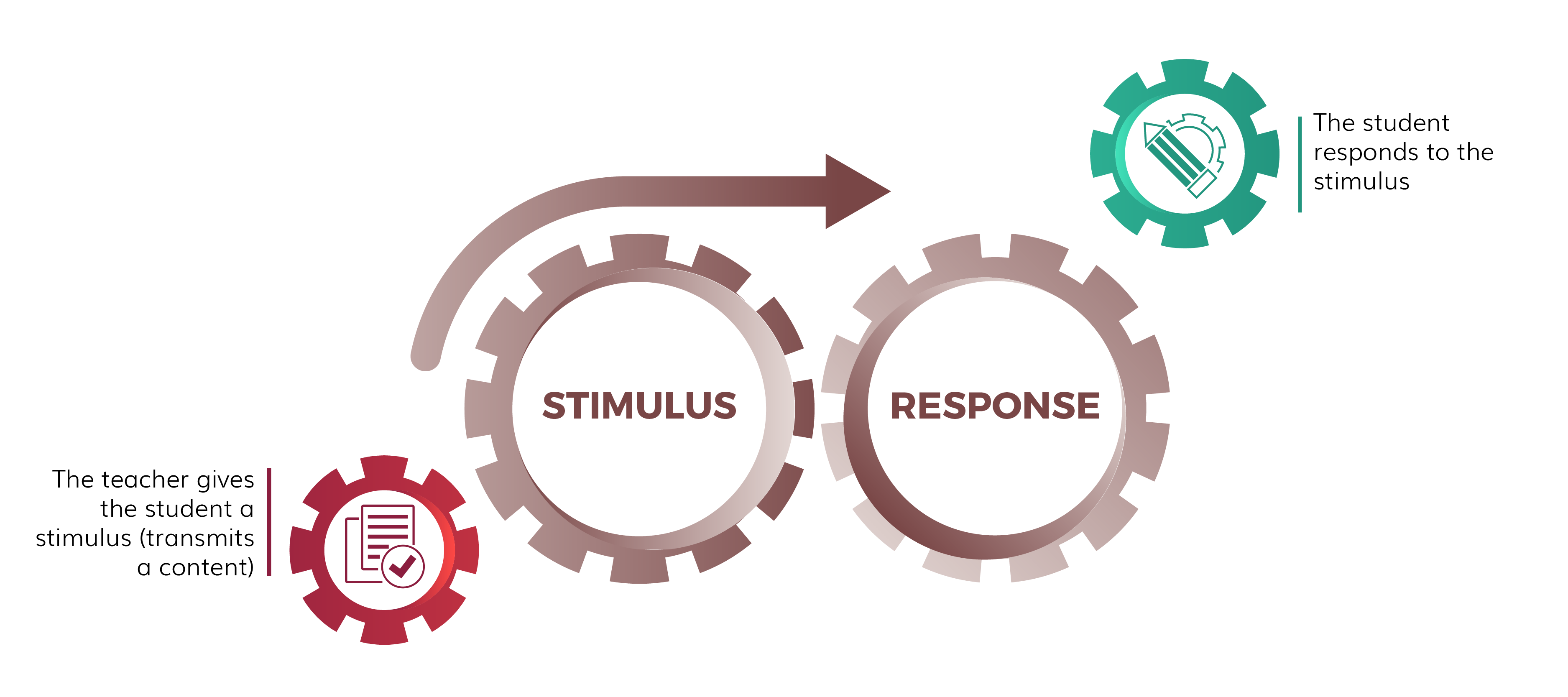Blog > Learning theories series : #1 Behaviorism
Learning theories series : #1 Behaviorism

Written by Rosaria
How do we learn? Which elements are taking part in this process? There is no single answer to these questions, but researchers have tried to answer nonetheless. In this series of posts I’ll talk about the 5 main learning theories: Behaviorism, Cognitivism, Constructivism, Socio-Constructivism and Connectivism. I’ll give you some concrete examples on how to apply them in a digital learning environment. The first learning theory in the series is Behaviorism.

What is a Behaviorism?
Behaviorism was originally developed in psychology to study observable human behavior and its “conditioning”. According to Behaviorists humans act in response to stimuli in their environment, or as a consequence of their personal “history” in terms of reinforcement and punishment contingencies. Skinner’s behaviorist theory of learning (developed in the 1960s) is based on the concept of “operant conditioning”: learning is subject to invariant principles that the learners cannot control (Bates, 2020). We learn because we change our behavior and behaviour is predictable and controllable.
The teacher gives the student a stimulus (transmits a content), asks the students some questions and the students respond. The students, then, are either rewarded (when they give the right answer) or punished (when they give the wrong answer). This mechanism is called reinforcement: for a correct answer we talk about “positive reinforcement” and for a wrong answer we talk about “negative reinforcement”. Reinforcement can be easily obtained: an immediate feedback for an activity or a correct answer to a multiple-choice test.

Behaviorism it’s interested in “reflexes” rather than in “reflexion” (as in thinking), therefore it is not concerned with what happens in the student’s mind. Behaviourism is an objectivist learning theory: a course is made of a body of knowledge to be learned. A behaviorist approach should therefore only be used when you aim at a more “shallow” type of learning, when you don’t need your learners to be able to analyse, for example, a certain topic in depth.
Behaviorism is one of the oldest and most criticised among learning theories, and yet it is the most common approach for teaching and training, especially in online learning. It applies three simple practices:
Build complexity
Start with simpler content and move on to more complex and difficult subjects step by step.
Divide and conquer
Learning content must be broken down into small chunks in order to allow reinforcement.
Be "positive"
Favour positive reinforcement over negative reinforcement.
Even with its limits, sometimes a behaviorist approach is the right choice. Think of language learning, where you have to learn a new vocabulary, or a training where you must learn repetitive gestures.
But, in practice, how do you use Behaviorism in e-learning courses? Start with presenting chunks of content to learners using different media (videos, graphics, texts, etc.). Then test their knowledge through quizzes (Multiple choice, Drag&Drop, etc.). Provide constructive feedback and reward students with points, badges, etc. when they give the correct answers or after successfully completing a module. Move to the next subject only when they succeed the tests for the previous one.
To summarise:
BEHAVIOURISM
BASIC PRINCIPLE: Conditioning thanks to positive reinforcement
TEACHER/TRAINER: Builds the pedagogical progression and “gives” the content to be learnt
LEARNER: Passive, then evaluated
HOW: Creation of automatisms, Memorisation rather than understanding
WHEN: Language training, repetitive gestures, etc.
Some examples of learning courses made with a behaviorist approach could be found in my Portfolio page:
Sources, references and links
Other than speaking for my personal experience, all the references and resources that I used to write this article are available here:
- Bates, A. W. (2020). Teaching in a Digital Age–Second Edition. Vancouver, BC: Tony Bates Associates Ltd.
- La place des 5 grandes théories de l’apprentissage dans la formation, White book, in the blog Sydologie
Related Articles
Related
Learning theories series : #2 Cognitivism
How do we learn? Which elements are taking part in this process? There is no single answer to these questions, but researchers have tried to answer nonetheless. In this series of posts I’ll talk about the 5 main learning theories: Behaviorism, Cognitivism,...
